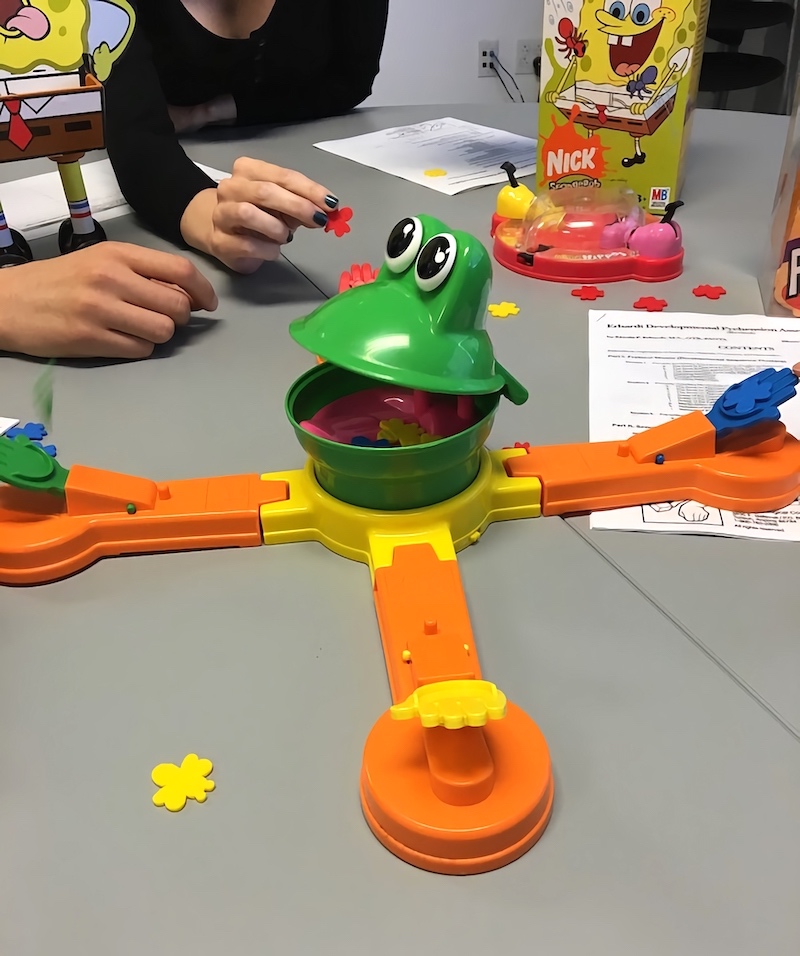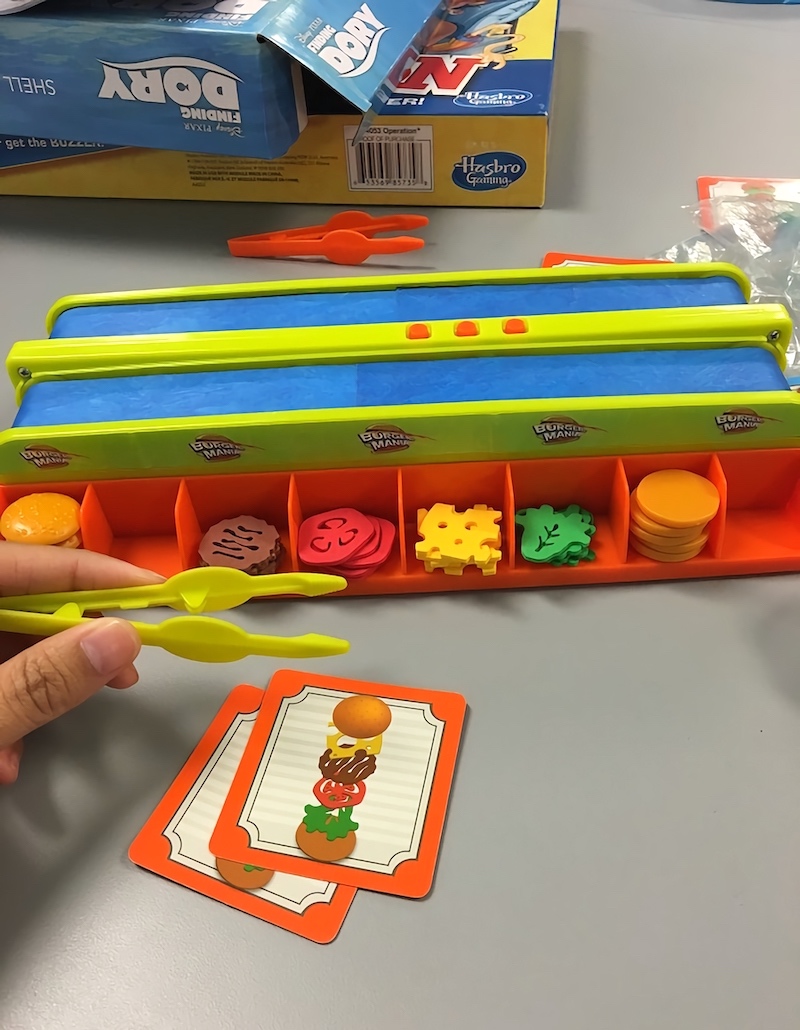All fun and games

September 26, 2016
by Jessica
What I love most about pediatrics is that we often use play, a child’s main occupation, as a means and ends to help a child meet their developmental milestones. And really, who doesn’t love to play?
This past week in pediatrics lab we focus on fine motor coordination assessments and fine motor activities, which included getting to play with a ton of games that can be used to address fine motor coordination skills. Here are some photos of a couple games we played in lab and what they could be used for in practice.

Mr. Mouth game
Mr. Mouth is a game where the goal is to catapult as many flies into the frog’s mouth as possible, while the frog’s mouth is rotating in a circle. There was actually a pretty steep learning curve to this game — it took many missed attempts to figure out that you needed to use less force to get the fly into the frog’s mouth. It can be used to help a child work on isolated finger movement or grading force, which are both important pre-writing skills!

Burger Mania game
Burger Mania is a game where you compete against another person to create a mini burger on the mini conveyor belt before it falls off. You pick a card, and it tells you the type of burger you need to make. The conveyor belt continuously moves, and you have to use these tiny tongs to grab each burger component one at a time to place on the burger in the correct order. This game can be used to work on a child’s ability to use tools, which is also another important pre-writing skill. This game was actually pretty challenging, given the time and speed components. It would be important to keep in mind a child’s frustration tolerance when planning to use this game in therapy.
Overall, pediatrics has definitely helped me with my activity analysis skills. Now whenever I see board games and toys for kids, I can’t help but think about how it can be incorporated into OT practice. Stay tuned for more fine motor goodness in next week’s post!
⋯
Next by tag Classes ⟩ What are OS/OT? ⟩
⋯





